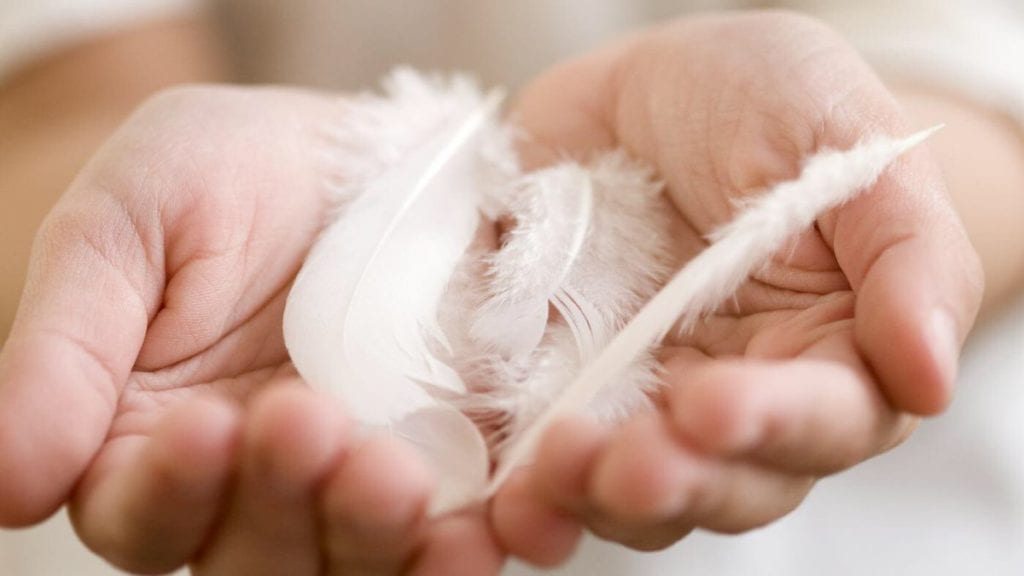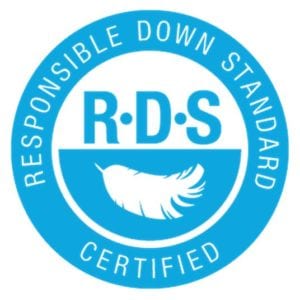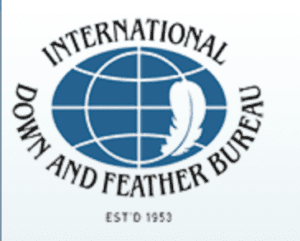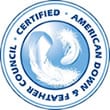
Marketing, Sourcing, Issues, and Certifications
Down and Feathers in the Marketplace
While down and feathers have been used in featherbeds and pillows for a long time, they are now increasingly used in other applications, such as covers (duvets, comforters and blankets) and apparel. Some items of apparel are vests, coats, snow suits, parkas, gloves, boots and slippers. According to a report by Transparency Market Research – “Down and Feather Market (Type – Down and Feather; Origin – Duck and Goose; Product – Pillows, Comforters, Bedding, and Apparel) – Global Industry Analysis, Size, Share, Growth, Trends, and Forecast 2016-2024” – despite growth in the use of down and feathers in apparel, “the segment of comforters is expected to dominate.”
Many down-filled products are for sale on Amazon. In bedding items with 100 or more customer reviews, there are 10 down and down-feather pillows, 6 featherbeds, and 8 comforters (for each of these items, there are many more with fewer reviews). Other down bedding articles sold on Amazon include down blankets and duvets. The greatest variety of manufacturers is in pillows, while down comforters are dominated by Egyptian Bedding, which has almost ⅔ the down comforters with over 100 customer reviews, collectively the highest number of reviews (Natural Comfort has the highest number of reviews for one item), and the highest average customer rating for several items (Snowman has the highest rating for one item).
Down and Feather Sources
To put it bluntly, down and feathers come from either live or dead birds, shed or plucked.
Shed Down and Feathers
Eider ducks are the most productive live source of shed down. The mother duck sheds a large amount of down while preparing her nest for brooding, and she sheds more while brooding. With a tamed eider duck, extra down can be frequently harvested without harming or alarming the bird. Brood down is also collected from other domesticated waterfowl.
Down and feathers can be collected when birds molt in the spring and the fall. The advantage lies with domesticated birds, since the product is shed in controlled places and is cleaner and more secure than down collected in the wild.
Plucking Meat Birds
In ancient times and the Middle Ages, domestic fowl – both poultry and waterfowl – were raised for eggs and meat. Plucking a killed bird was part of the process of preparation for cooking, and the feathers and down were byproducts with their own value.
This was true until modern large-scale farming with thousands of fowl raised together. Most of our eggs and chicken and turkey meat is now produced this way. The one drawback of this is that higher quality down is from waterfowl, but the milder-flavored meat from poultry is generally preferred over waterfowl, at least in North America. This limits the amount of waterfowl down which can be harvested without wasting carcasses.
In some places, such as China, ducks and geese are raised primarily for meat. Duck and goose meat is more in demand in China and southeast Asia. Down and feathers are a significant and lucurative byproduct.
Plucking Live Birds
Plucking live birds used to be acceptable and common. It is no longer generally acceptable, and in many countries is also illegal. What is acceptable to the public is collection of shed down and feathers and plucking birds slaughtered for meat.
However, some farms in China pluck geese and ducks several times before butchering. The motivation for this is the demand for down by garment and bedding industries. The economic advantage of getting more down from a bird in its lifetime through several pluckings is that they are able to sell their down and feathers at a lower price for a larger market share. Some advocacy groups, such as PETA, have conducted undercover investigations.
Certifications for Down and Feather Bedding
Areas of concern in certification of down and feathers and products using them are (1) animal welfare, (2) sustainability, (3) organic aviculture, (4) hygiene, and (5) allergies. There are also labeling standards regulated by governments in Europe and North America concerning the ratio of down to feathers in a product.
Four organizations for the testing and certification of down and feather products, including bedding, are Responsible Down Standard (RDS), International Down and Feather Bureau (IDFB), American Down & Feather Council, and Allergy Standards Limited (ASL).
Responsible Down Standard (RDS) 
Responsible Down Standard (RDS) is an arm of the Textile Exchange (TE), a non-profit organizations whose members are firms engaged in textile industries. The concern of RDS is assuring consumers and manufacturers of down products that the down is procured in a manner not harmful to living birds. The part of the standard receiving the most public attention is the ban on live plucking.
International Down and Feather Bureau (IDFB) 
On their website, the International Down and Feather Bureau (IDFB) says, “IDFB is the international trade association of the down/feather industry (processors of raw material and/or producers of finished articles, filled with down/feathers), the down/feather trade and independent testing institutes for down/feather as filling material.” It is more narrowly focused than the Textile Exchange.
IDFB has 26 offices in 11 countries – most in China. This should not be surprising, since China is the largest producer of down and feathers.
American Down & Feather Council 
The American Down & Feather Council states on their site that they are “a section of the Home Fashion Products Association (HFPA).” Their concern is accurate labeling of down and feather products and the meeting of certain standards, including the humane treatment of the birds producing the down and feathers.
Allergy Standards Limited (ASL) 
Allergy Standards Limited (ASL) was founded by healthcare professionals to set standards for allergens in consumer products and test the products for compliance with these standards. Certification by ASL means the products are free from allergens. This includes down and feather products.

